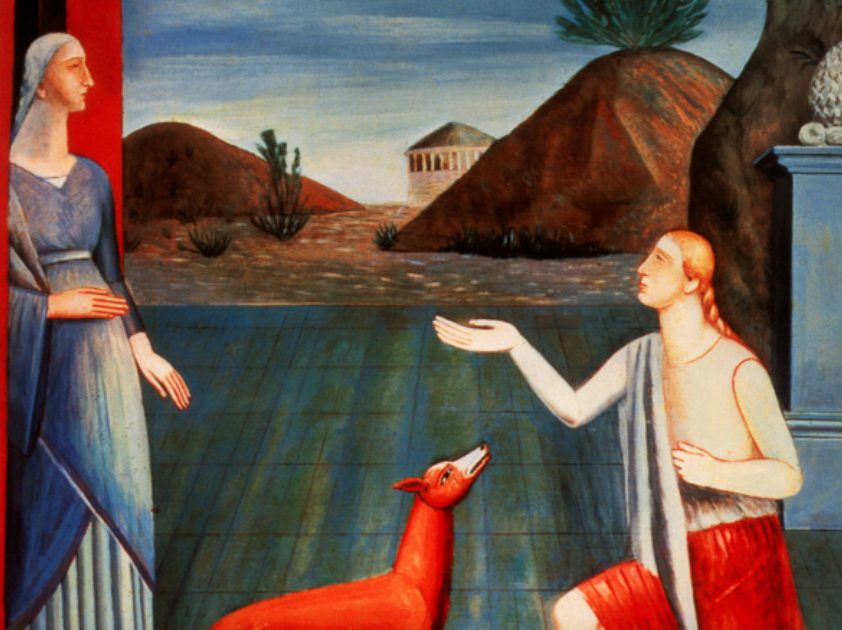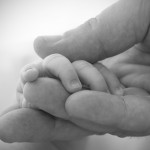
Content warning: discussion of child sexual abuse and incest.
Now Lot went up out of Zoar and lived in the hills with his two daughters, for he was afraid to live in Zoar. So he lived in a cave with his two daughters. And the firstborn said to the younger, “Our father is old, and there is not a man on earth to come in to us after the manner of all the earth. Come, let us make our father drink wine, and we will lie with him, that we may preserve offspring from our father.” So they made their father drink wine that night. And the firstborn went in and lay with her father. He did not know when she lay down or when she arose. The next day, the firstborn said to the younger, “Behold, I lay last night with my father. Let us make him drink wine tonight also. Then you go in and lie with him, that we may preserve offspring from our father.” So they made their father drink wine that night also. And the younger arose and lay with him, and he did not know when she lay down or when she arose. Thus both the daughters of Lot became pregnant by their father.
As a child, I did not understand the story about Lot and his daughters. His daughters were nameless and faceless, cardboard characters in a patriarchal narrative used to move the story along. We are told only three things about them: First, they were of betrothal age during Abrahamic times, so they likely were recently pubescent. Second, these two young girls were offered up to a mob for gang rape by their father: “Behold, I have two daughters who have not known any man. Let me bring them out to you, and do to them as you please” (Genesis 19:8). And third, despite being likely young, vulnerable, disposable to their father (see: gang rape offer), and later isolated in a cave, they were eventually accused of raping him.
Even as a child who did not understand the dynamics of abuse, this story just did not make sense. I came away from the story with the message I felt the narrative’s author intended—that Lot’s daughters were licentious and depraved. That they took advantage of their poor, drunk father, just like Ham sexually assaulted his father Noah. But I also was confused. How did these marginalized young girls, who were just moments prior about to be thrown out to be sexually assaulted themselves, become—seemingly overnight—active and machinating sexual criminals?
Now that I am an adult, I have studied the dynamics of child abuse and sexual abuse. And when I look at the story of Lot and his daughters, I cringe. I cringe because I know this story has been taught year after year, to child after child, in a way that communicates that Lot was a victim and his daughters—who were likely still children—were the abusers. I mourn the fact that so many adults miss that this story can and should be a powerful teaching moment about how our world shifts the blame for abuse onto victims.
Before discussing the story further, I want to address three potential objections: First, I realize people have interpreted the story in diverse ways for many years. I am not claiming this is an authoritative exegesis. Second, I realize the story itself is questionable: whether it is historical fact, revisionist fiction, or tragicomic morality tale. Third, nothing I say should be construed to mean that it is impossible for women to drug and rape people. I am a survivor of child sexual abuse at the hands of a woman and I have been sexually assaulted as an adult by a woman as well. So yes, how we traditionally read the story of Lot’s daughters—that they were women who raped a man—is something that can and does happen.
At the same time, I do not buy it in this case. It rings false, whereas (for example) the story about Potiphar’s wife and Joseph—where Potiphar’s wife falsely accuses Joseph of rape—rings true. Joseph’s story rings true because the power differentials were on the side of the woman. In Lot’s case, the power differentials were against the women and their actions were unnecessary.
Their actions were unnecessary because Lot was not the only man left on earth like the daughters say: “There is not a man on earth to come in to us after the manner of all the earth” (Genesis 19:31). Right before Lot “lived in the hills with his two daughters” (Genesis 19:30), he lived in Zoar—the city he specifically asked the angel to save so he would not have to go to the hills (Genesis 19:17-22). The angel granted his request, and God spared the city of Zoar as They rained sulfur and fire onto Sodom and Gomorrah for the sins of opulence and ignoring the oppressed (Ezekiel 16:49). But after a brief stay in Zoar, Lot decides to leave because he “was afraid to live” in the city (Genesis 19:30).
To summarize, then: Lot and his family were fully aware there were other human beings and cities in existence after the destruction of Sodom and Gomorrah—they lived in one such city. Furthermore, the tribe of Lot’s uncle Abraham was close by—close enough to witness the destruction of Sodom. There were plenty of options for meeting the need to procreate.
This causes me to have a different take. Reading the text with an eye towards child liberation and child protection means I place the children at the center of the story. When I do that, here is what I read: two young girls are offered up for gang rape by their father—a father prone to drinking, who cares little about his daughters’ protection, and has no qualms with sexual violation provided it is girls who are violated. The poor children are dragged from one city to another until they are forced to live in isolation with their drunken father in a cave. Shortly thereafter both children are pregnant. A child liberative and protective lens would color this story as child sexual abuse.
I first heard this alternative interpretation from Ilan Kutz in “Revisiting the lot of the first incestuous family: the biblical origins of shifting the blame on to female family members.” Kutz argues that this view dates back to at least the 1500’s and has found resonance among artists:
How is it that father-daughter incest is universally perpetrated by the father, while in Genesis the roles are reversed? In my view, some painters, such as Dürer (1555), Francesco (1600-46), and most strikingly Goltzius (1558-1617), suggest that the roles were not reversed, and that it was Lot who abused his daughters. In Goltzius’ painting, the naked Lot is not in a deep alcoholic daze but is fully coherent and cunningly sizing up his prey, a far cry from “and he knew nothing of her lying down or her rising up” repeated after each daughter lies with him. In this painting, alcohol is not dulling his senses but probably disinhibiting his frontal lobes, which is precisely what happens to many abusive fathers when they drink.
But then why does the biblical narrative tell us that Lot’s daughters raped him, not that he raped them? Because that is how child abuse and sexual abuse stories work in our world. Look no further than the recent story of child rapist Thomas Hopper and his pastor Michael Horten. Horton defended Hopper’s placement on Horten’s church’s ministry staff, saying, “It takes two to tango, okay? So if that girl chooses to sleep with him, she’s just as guilty as he is.”
The story of Lot’s daughters is just another example of this. As Elizabeth Breau writes in “Teaching Rape and Incest,” “The story of Lot’s daughters in the Old Testament blames daughters for incest instead of fathers, legitimating theories of ‘seductive daughters’ centuries before Freud (Gen. 19:31).” One can imagine the authors of this biblical narrative, living in patriarchal and adultist times just like we do, deciding it was impossible for the girls to become pregnant without them seducing their father. It takes two to tango, okay?
A glaring example of this can be seen in Zondervan’s 1988 commentary on the story:
The two daughters born to Lot in Sodom were as shameless as they are nameless. Their father, righteous though he may have been in contrast to the godlessness around him, exercised no influence over them… The lack of any true morality whatever in Lot’s daughters is evident by what happened in that cave once all three were clear of the smoking Sodom. There is no mention of any remorse on their part over the sin occasioning the destruction of the city, and the tragic death of their mother. Their utter degradation ending in Lot’s intense shame is the most dreadful part of his story. How revolting was the conduct of the daughters when they made their father drunk in order to make him the unwilling father of their children.
Note that Zondervan revels in the namelessness of the children, contrasting their alleged shamelessness with Lot’s alleged righteousness. Zondervan partially blames the children for the destruction of Sodom (“their part over the sin occasioning the destruction of the city”), but not Lot. Zondervan argues “the most dreadful part” of the story is that Lot experienced “intense shame” after his daughters end up pregnant, but the gang rape offer somehow goes unmentioned. And the daughters are “revolting” for “making” their father drunk—entirely excusing Lot of his drunkenness. And there is not a single reference to the age of children. It is like child rape does not exist in their minds.
That is how child abuse and sexual abuse stories work in our world.
The adult claims the child wanted it—or the child deserved it—or the child masterminded it—or the child needed it—or the child was sinful. Abusers constantly are trying to shift blame for abuse onto the victims they abused. And society in general is more than willing to give abusers the benefit of the doubt. After all, we live in patriarchal times and men are the most common abusers. So we justify the abuse, or we excuse it, or we come up with reasons for why it was not the abuser’s fault, or we decide it was a mutual decision. Then we repeat these stories and justifications and excuses and rationales over and over again, until even a self-contradictory biblical narrative is interpreted by churches and Christians in favor of the abuser for centuries.
Here are the facts about incest and child sexual abuse: Children cannot consent to sex with adults, including their parents. Adults or parents who claim otherwise are trying to deflect attention from their crimes. Children make up 44% of sexual abuse victims. Someone known to the victim, like a family member, commits 4/5 of those assaults. For 80% of juvenile victims, the perpetrator was a parent.
Here are the facts about a one-time sexual encounter and pregnancy, like what happened to both of Lot’s daughters: According to medical reports, the incidence of pregnancy for one-time unprotected sexual intercourse is 5%. The likelihood of Lot’s daughters both getting pregnant from a one-time sexual encounter is slim.
What is more likely, then, is that Lot raped his daughters until they were pregnant. This would not be the last time a father has attempted something so horrific and used alcohol to ply his guilty soul. As Kutz notes,
That incest is usually repeated is supported by modern research. Once he starts, the incestuous perpetrator often continues for years. As the daughter reaches an age when she is able to resist or flee, the activity may be repeated with a younger sister. Though the profiles of incestuous families may vary, the father-perpetrator is typically an immature individual with low self esteem, while the wife-mother is depressed, helpless, or otherwise emotionally absent. The father often uses alcohol to allay his inhibitions before molesting his daughters.
Parents need to know these facts and use them to protect their children. Even within such a small world as the Christian homeschooling world (which is where I conduct my advocacy work), case after case of situations like this can be found. This is one of the oldest tricks in the abuser’s book, and I am suggesting it is entirely possible Lot wrote the page himself.
As an adult, if I were to now teach this story to children, I think this is what I would teach: that our world is sinful in many ways, and one of those ways is that we shift blame for abuse onto abuse victims. We automatically assume victims are at least somewhat to blame; we automatically side with those with power and against the powerless; we automatically side with men in patriarchal societies and against women. And if anyone, even one of your parents, touches you in inappropriate ways, tell an adult you trust immediately.
We desperately need a renewal of our world, and Jesus shows us the way to start bringing about change: by overturning the tables in the temples of power, by taking the side of the oppressed, and by fighting our own Sodom-and-Gomorrah instinct to ignore or turn away from the cries of the abused. This is what I would teach about Lot’s daughters. Though they remain nameless, I would name them survivors. They would be praised for their resiliency, as they raised their children to eventually become the forbearerers of many significant biblical characters, including Ruth the Moabite and even Jesus himself.












